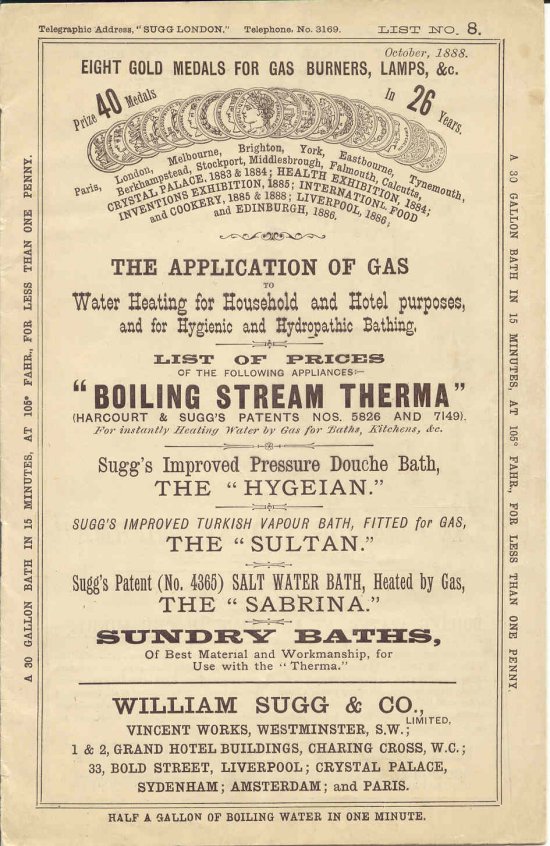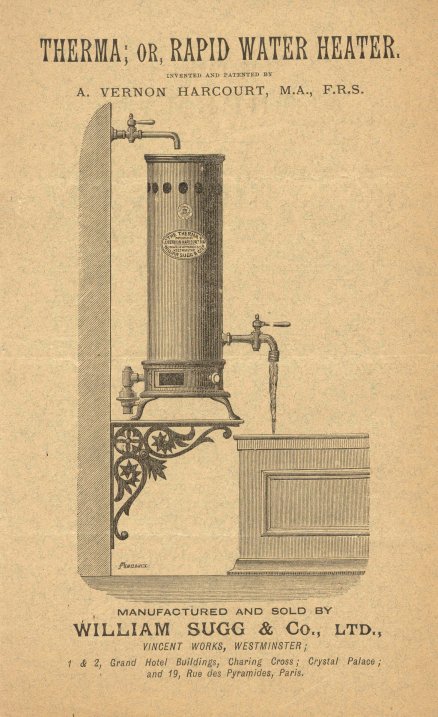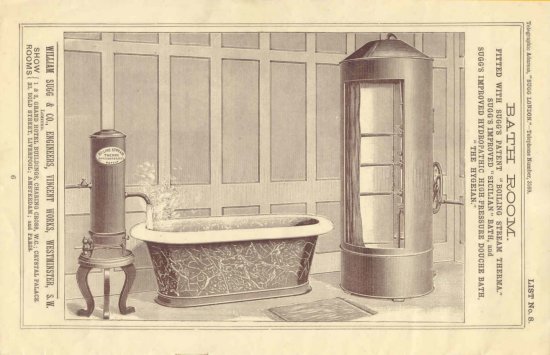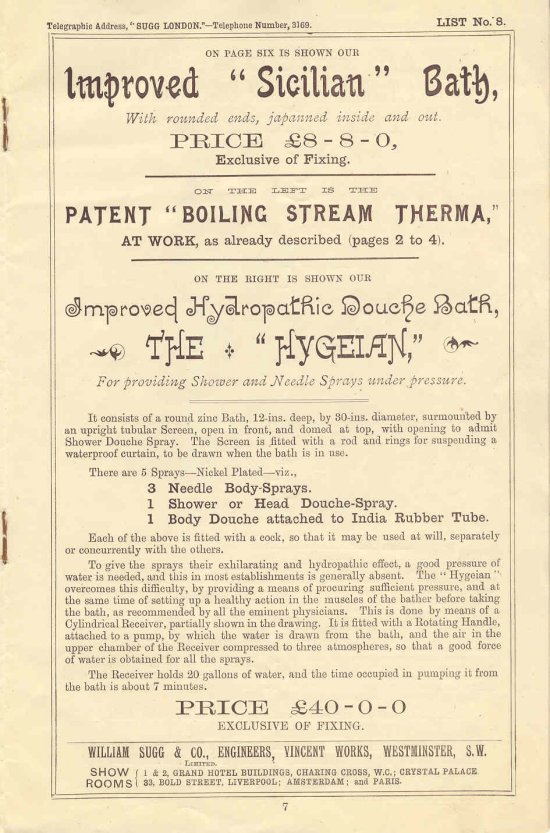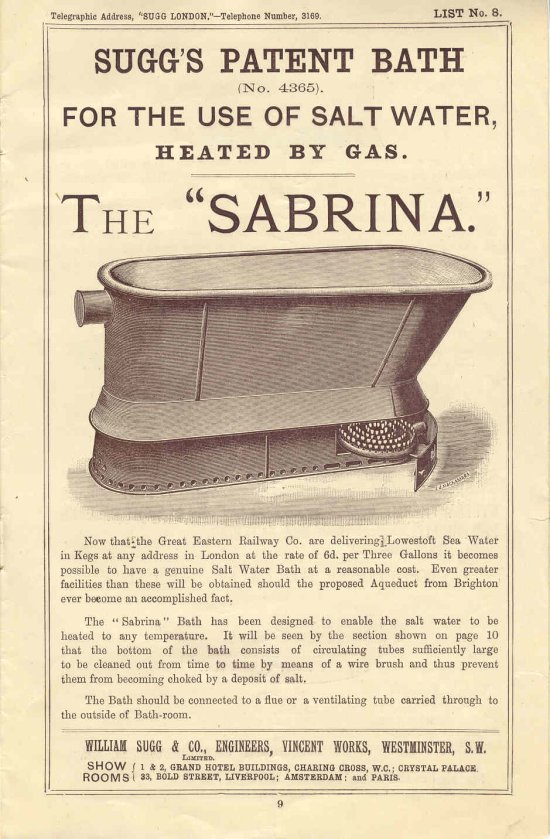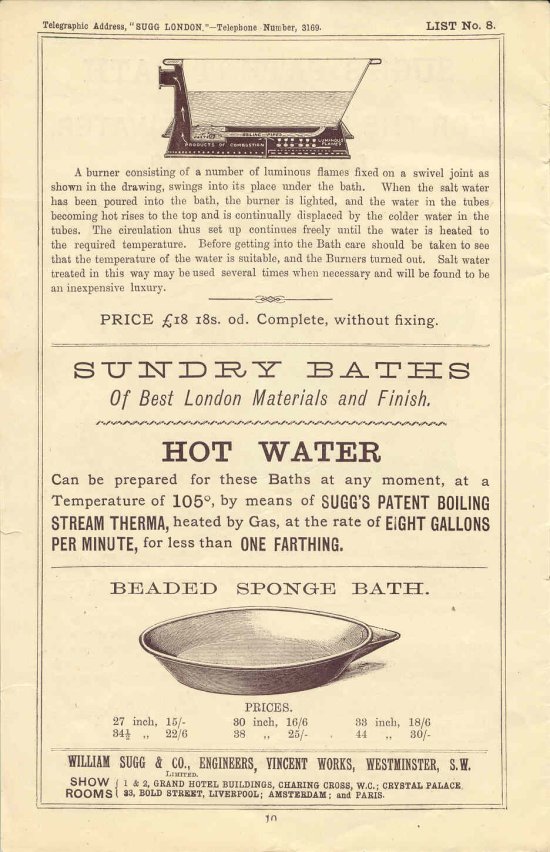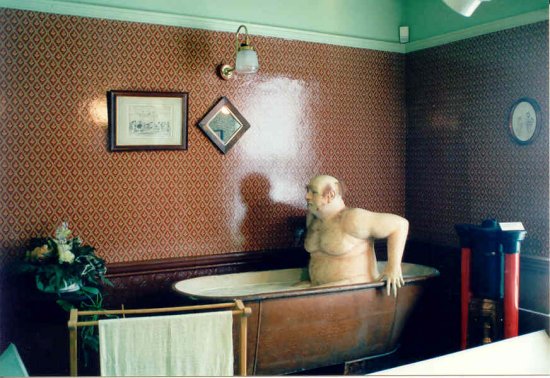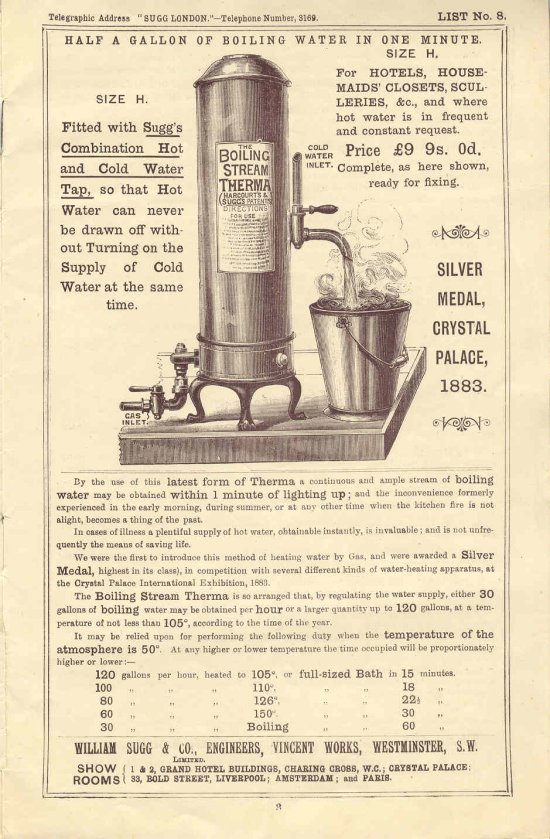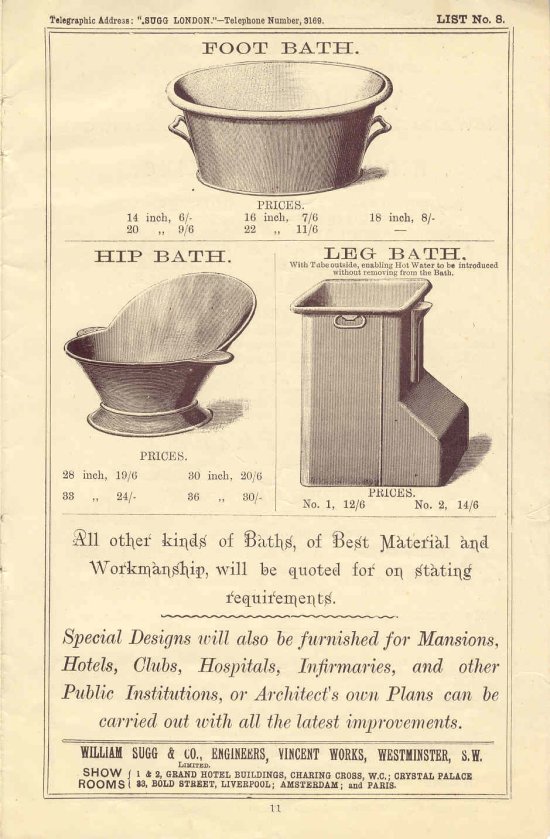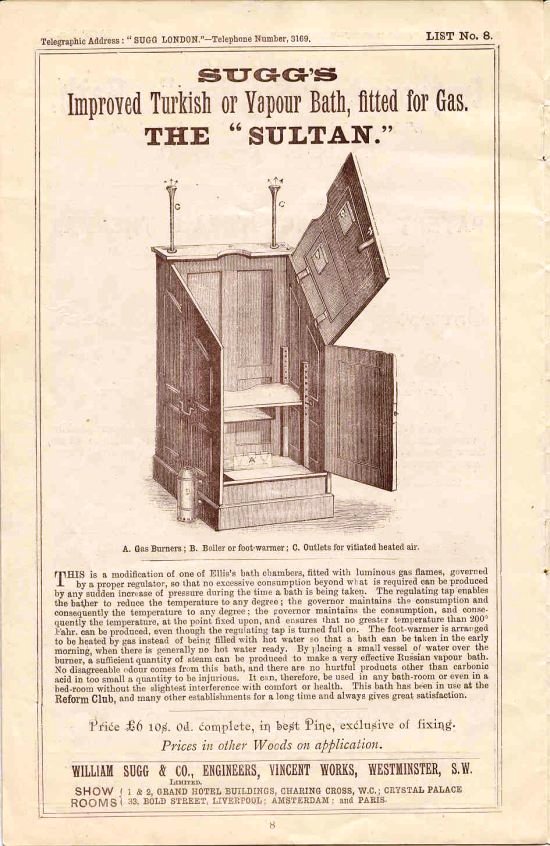(This is an element of ‘Heating’)Whilst water was heated over a fire and then on a solid fuel stove and eventually on a gas stove, it was, necessarily, a slow process heating a full container for purposes such as washing clothes or the weekly(?) bath. A huge step forward was to heat water as it was flowing and thus provide a continuous source of hot water. Gas has the advantage of providing very large amounts of heat from a relatively small volume, unlike electricity for which very large cables would be necessary to achieve the same performance. Once what we would call an Instantaneous water heater had been developed other equipment followed – and William Sugg produced some of the most entertaining!
Front Cover of October 1888 List No.8
The Instantaneous Water Heater
This delightful display was photographed in the North Thames Gas Museum at Bromley by Bow before it was closed. You may have noted the comment in the leaflet above – ‘Before getting into the bath care should be taken to see that the temperature of the water is suitable and the burners turned out’.
UNDER CONTINUOUS DEVELOPMENT – PLEASE TRY AGAIN LATER
Copyright © Chris Sugg 2006-13
Top of page
or
Back to Heating

